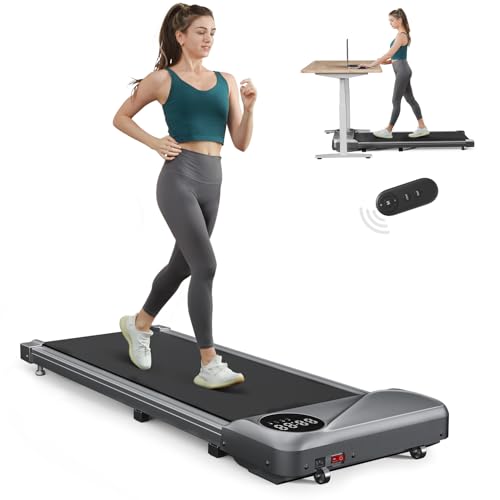Treadmills: A Comprehensive Guide to Understanding Their Functionality, Benefits, and Appropriate Selection
Introduction
Treadmills have actually ended up being a staple in modern fitness routines, both in homes and health clubs worldwide. They use a hassle-free and effective way to preserve cardiovascular health, increase endurance, and help in weight management. This article checks out the various kinds of treadmills, their advantages, functions to consider when acquiring, and some FAQs to guide users in making notified choices.
Types of Treadmills
When it comes to picking a treadmill, it is crucial to understand the various types offered in the market. Here are the main classifications:
1. Manual Treadmills
- System: These treadmills have an easy style and rely on the user's efforts to move the belt.
- Pros: More inexpensive, quieter operation, no electrical energy required.
- Cons: Limited functions, might not supply the exact same variety of exercise intensity.
2. Motorized Treadmills
- System: Powered by a motor that drives the belt, permitting users to walk or run at a set rate.
- Pros: Greater variety of speeds and slopes, equipped with various features such as heart rate monitors and exercise programs.
- Cons: More expensive and may require more upkeep.
3. Folding Treadmills
- Mechanism: Designed for those with minimal space, these treadmills can be folded for simple storage.
- Pros: Space-saving, often motorized, versatile functions.
- Cons: May be less resilient than non-folding designs.
4. Commercial Treadmills
- Mechanism: High-quality machines designed for usage in gyms and physical fitness centers.
- Pros: Built to stand up to heavy usage, advanced features, typically consist of guarantees.
- Cons: Pricey and not ideal for home use due to size.
5. Curved Treadmills
- Mechanism: An unique style that enables users to propel the belt using their own energy.
- Pros: Offers a more natural running experience, promotes much better running type.
- Cons: More costly and can be noisier.
| Treadmill Type | Pros | Cons |
|---|---|---|
| Handbook | Cost effective, no electrical energy required | Limited features |
| Motorized | Variety of speeds, advanced functions | Upkeep needed |
| Folding | Space-saving, frequently motorized | May lack durability |
| Industrial | Constructed to last, professional-grade features | Pricey |
| Curved | Natural running experience, promotes great form | Greater rate |
Advantages of Using Treadmills
Treadmills use many advantages that can contribute to one's total fitness and health objectives. A few of these advantages include:
- Convenient Workouts: Treadmills enable users to work out inside your home regardless of weather.
- Cardiovascular Health: Regular usage can improve heart health by increasing endurance and promoting healthy blood circulation.
- Weight Management: Effective for burning calories, which assists in weight loss and management.
- Customizable Workouts: Users can manage speed, incline, and period to develop customized workout experiences.
- Security: Treadmills offer a predictable surface, decreasing the danger of falls compared to outdoor running.
- Multifunctional: Many treadmills included functions like heart rate screens, exercise programs, and even home entertainment systems.
Selecting the Right Treadmill
When picking a treadmill, potential buyers need to think about numerous key elements:
Features to Consider:
- Motor Power: Typically measured in horse power (HP), a motor strength of at least 2.5 HP is advised for major runners.
- Belt Size: A longer and broader belt accommodates numerous stride lengths, providing convenience throughout exercises.
- Slope Settings: Adjustable incline functions simulate outside hill running and can increase exercise strength.
- Weight Capacity: Ensure the treadmill can support the user's weight for safety and durability.
- Console Features: Look for user-friendly control panels, exercise programs, and Bluetooth compatibility for streaming music or other functions.
Spending plan Considerations
- Under ₤ 500: Entry-level manual treadmills ideal for casual walkers.
- ₤ 500 - ₤ 1,500: Mid-range motorized treadmills that offer more functions and better durability.
- ₤ 1,500 - ₤ 3,000: High-end designs with innovative innovation, larger motors, and longer service warranties.
- Over ₤ 3,000: Commercial-grade treadmills ideal for frequent use in fitness centers or training facilities.
Frequently Asked Questions (FAQs)
1. How frequently should I use a treadmill?
It is advised to use a treadmill a minimum of three to five times a week, integrating different intensity levels for best outcomes.
2. Can I drop weight by using a treadmill?
Yes, consistent use of a treadmill can add to weight reduction, specifically when integrated with a balanced diet and strength training.
3. What is the very best speed to walk on a treadmill for novices?
A speed of 3 to 4 miles per hour is an appropriate variety for newbies. It's important to start slow and gradually increase speed as comfort and endurance enhance.
4. Do I require to utilize a treadmill if I currently run outdoors?
Utilizing a treadmill can provide extra advantages, such as controlled environments and varied exercises (slope, periods) that are not always possible outdoors.
5. How do I preserve my treadmill?
Regular upkeep consists of lubricating the belt, cleaning the deck and console, and checking the motor for ideal performance.
Treadmills are vital tools for those aiming to improve their physical fitness levels in a regulated and hassle-free way. With different types available, understanding their features and advantages is essential for making an informed purchase. By considering personal workout needs, space schedule, and budget restrictions, individuals can discover the most suitable treadmill that fits their way of life. Incorporating Hal Eema into a balanced fitness regimen can cause better health outcomes and a pleasurable exercise experience.

